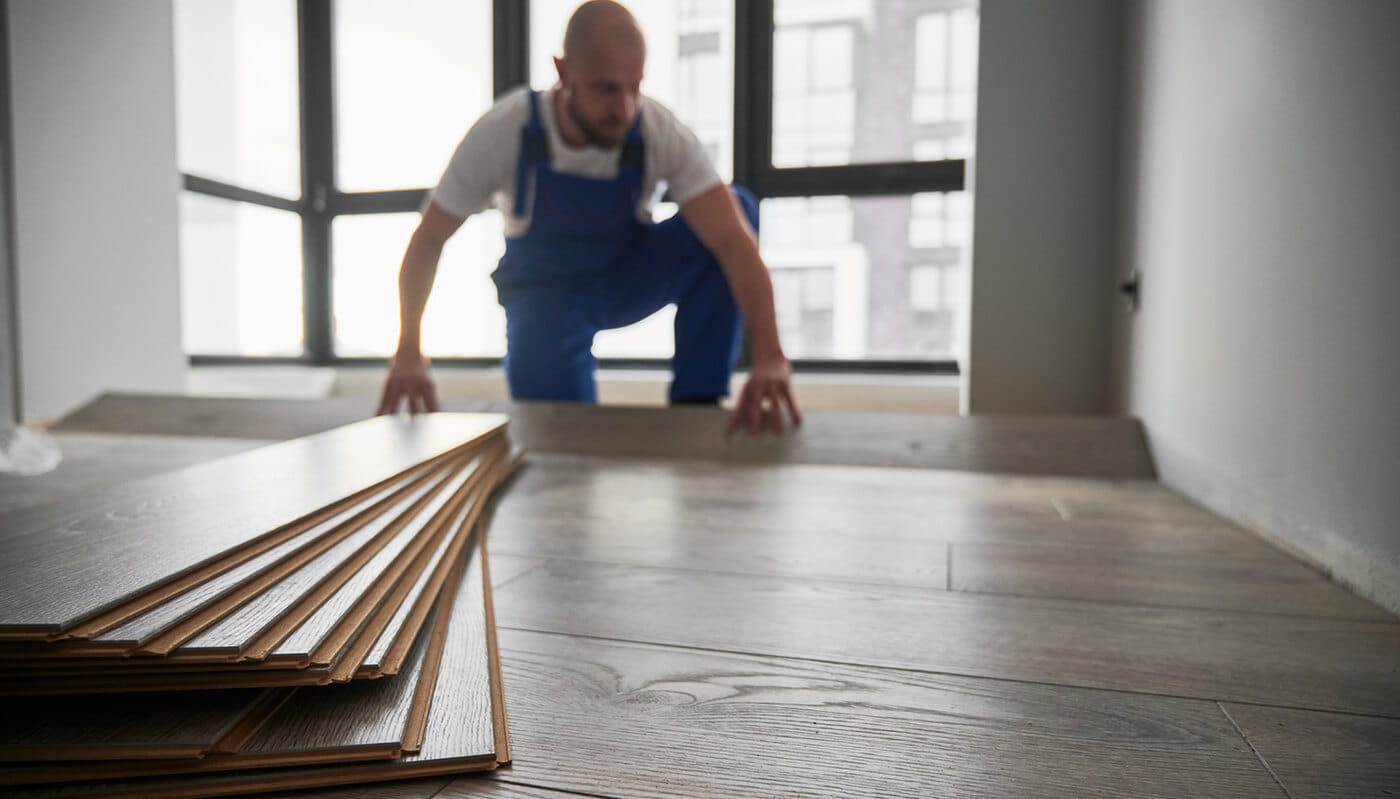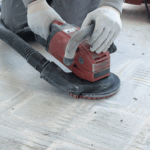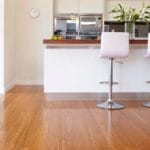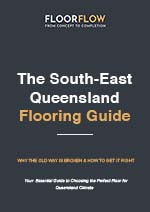Floating Floor Installation in Southeast Queensland: A Complete Guide
The evolution of floating floor installation has transformed Queensland homes, making premium flooring accessible through ingenious click-lock technology. While this European innovation has simplified the installation process considerably, successful floating floor installation in Southeast Queensland demands understanding of both the technology’s capabilities and our region’s unique environmental challenges.
The Click-Lock Revolution
European laminate manufacturers developed the click-lock system over thirty years of refinement, originally designed for inner-city Europeans who frequently relocated and needed removable flooring systems. This floating installation method creates a unified floor where individual planks interlock without permanent fixings to the subfloor, relying on precision-engineered profiles and gravity to maintain stability.
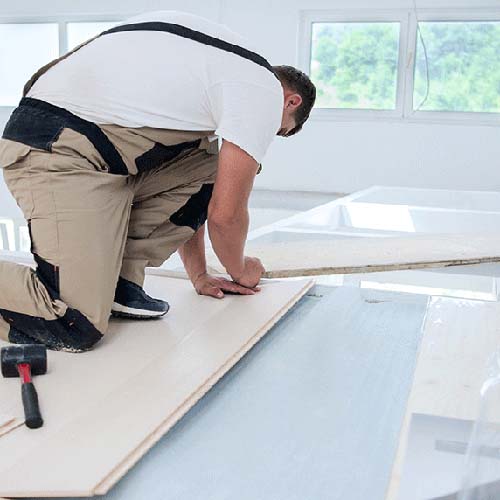

The technology applies across all major floating floor types in Queensland: laminate flooring with high-density fibreboard cores, hybrid flooring featuring stone polymer composite construction, luxury vinyl planks with advanced printing technology, engineered hardwood under 15mm thickness, and strand-woven bamboo products. Each material benefits from the same fundamental click-lock principle while offering distinct performance characteristics suited to different applications and budgets.
Queensland's Climate Reality
Southeast Queensland’s subtropical climate presents installation challenges rarely addressed in generic guides. Our region experiences dramatic humidity fluctuations from 40% in air-conditioned homes to over 80% during summer storms, combined with temperature variations from 10°C winter mornings to 35°C summer days. These environmental extremes demand modified installation approaches that exceed standard manufacturer specifications.
Professional installers consistently recommend expansion gaps 25-50% larger than temperate climate specifications, typically requiring 12-15mm perimeter allowances compared to standard 8-10mm recommendations. The wet season from November to April creates particularly challenging conditions, with many professionals scheduling major installations during drier months when environmental stability supports optimal
Beyond the YouTube Tutorial
Click-lock systems make floating floor installation appear deceptively simple, particularly in perfectly square rooms with level subfloors. However, real-world Queensland installations present complexities that can transform weekend projects into costly learning experiences. Room geometry issues, irregular shapes, and architectural features require careful planning and precise cutting techniques that standard DIY tutorials rarely address comprehensively.
Every floating floor installation is a conversation between engineered precision and natural forces. In South East Queensland, success belongs to those who listen carefully to both. – Otto Kern
Subfloor variations across different construction eras present additional challenges, from timber battens requiring plywood overlays to concrete slabs with potential moisture issues. Pattern planning becomes critical for avoiding narrow slivers at room edges or awkward transitions between spaces. The difference between successful DIY installation and professional results often lies in understanding these complexities before beginning rather than discovering them mid-project.
Essential Subfloor Preparation
Success begins with comprehensive subfloor assessment and preparation, addressing foundation requirements that determine long-term performance. Structural integrity demands subfloors meet specific deflection limits, typically L/360 for residential applications, with any squeaking, deflection, or visible damage indicating underlying issues requiring professional attention before flooring installation.
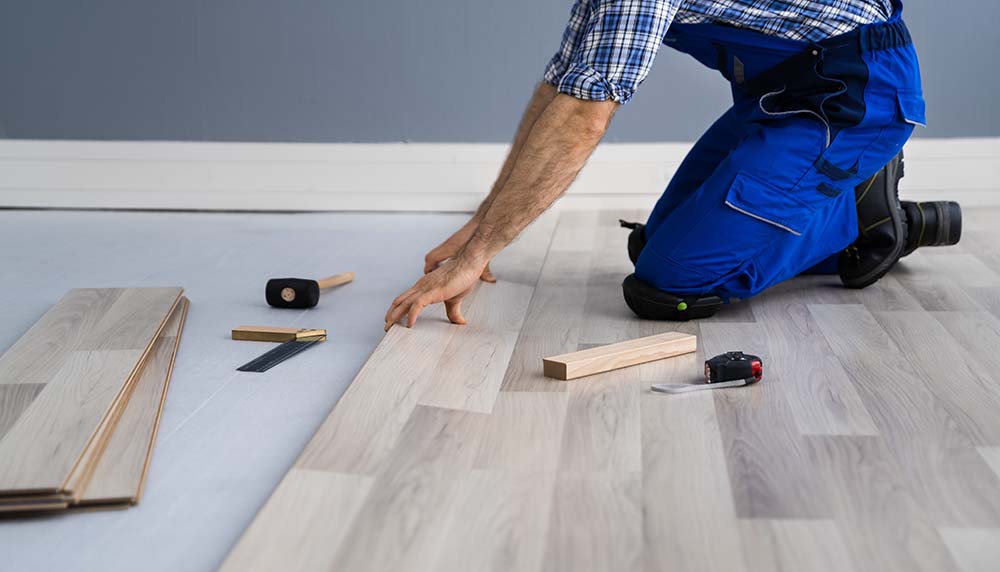
Flatness standards require maximum 3mm variation over 2-metre spans for optimal floating floor performance. Uneven subfloors create stress concentrations leading to premature failure or visible defects, often necessitating grinding high spots, filling low areas, or installing levelling compounds. Moisture management becomes particularly critical in Queensland, with concrete subfloors requiring testing using calibrated meters and remediation when levels exceed 4% moisture content.
Moisture Protection and Underlayment
Queensland’s humid environment makes comprehensive moisture protection essential for floating floor longevity. Vapour barriers for concrete subfloors prevent moisture transmission that can compromise both flooring materials and adhesive systems over time. Professional-grade underlayment featuring integrated moisture barriers provide superior protection compared to basic foam options, though they require proper sealing at joints and perimeters to maintain effectiveness.
Acoustic considerations become mandatory for apartments and townhouses, where specific sound transmission ratings must be achieved to comply with building regulations. Failure to meet these requirements can necessitate complete reinstallation, emphasising the importance of understanding local building codes before commencing installation. Cork backing and premium foam systems provide superior sound dampening while offering enhanced comfort underfoot.
Professional Installation Techniques
Understanding professional methods helps DIY enthusiasts achieve better results while recognising when expert assistance becomes worthwhile. Material acclimatisation requires minimum 48-72 hours in installation environments, with timber-based products potentially needing up to one week in challenging Queensland conditions. Storage involves partially opening packaging for air circulation while protecting materials from direct moisture exposure.
Layout planning begins with establishing straight reference lines and considering entire home pattern continuity. Professional installers start at the longest, straightest wall and plan plank placement to minimise waste while achieving desired visual effects. Row staggering maintains minimum 450mm spacing between end joints in adjacent rows, preventing pattern alignment that can create visual weakness lines across the installation.
Installation Process Excellence
Room preparation involves complete furniture removal, thorough cleaning, and moisture barrier installation where required. The first row determines entire floor alignment, making precise positioning and straightness verification critical before proceeding. Using spacers to maintain appropriate expansion gaps throughout the perimeter prevents future buckling while accommodating Queensland’s temperature and humidity variations.
Subsequent rows require systematic progression, starting each new row with remaining pieces from previous rows when exceeding 450mm length. The angle-and-drop technique works effectively for most click-lock systems, though some rigid core products benefit from enhanced installation methods like the angle-angle-sidetap system that addresses end-joint challenges common with stone polymer composite materials.
Edge Finishing and Transitions
Professional appearance depends heavily on edge finishing choices and execution quality. Removing existing skirting boards before installation creates the cleanest appearance, allowing proper expansion gap accommodation while maintaining traditional room proportions. This approach requires careful skirting removal, storage, and reinstallation, adding time and complexity but delivering superior aesthetic results.
Scotia or quadrant moulding provides practical alternatives when existing skirting removal isn’t feasible, covering expansion gaps while minimising disruption and labour requirements. Transition strips become essential where floating floors meet different flooring types, accommodating height differences while allowing independent movement of flooring sections. Quality transition materials and proper installation techniques ensure smooth, safe passages between rooms while maintaining the floating floor’s structural integrity.
Professional versus DIY Decision
Several factors favour professional installation in Queensland’s challenging environment. Complex room geometries, large installations exceeding 100 square metres, problematic subfloor conditions, and acoustic requirements for apartment installations often justify professional costs through superior results and warranty compliance. Many manufacturers require professional installation for warranty coverage, adding financial protection to quality assurance benefits.
Professional advantages include climate-specific expertise, specialised tools, systematic approaches preventing common errors, and ongoing support for maintenance needs. Experienced installers understand Queensland’s environmental challenges and adapt techniques accordingly, delivering results that perform reliably through seasonal variations and humidity extremes that challenge DIY installations.
Long-term Performance Success
Proper installation creates the foundation for decades of reliable performance, but ongoing care ensures optimal results in Queensland’s demanding climate. Immediate post-installation care involves allowing floors to settle before heavy furniture placement, using felt pads under furniture legs, and maintaining consistent humidity levels when possible through air conditioning and dehumidification systems.
Queensland-specific maintenance includes monitoring humidity levels during extreme weather periods, inspecting expansion gaps for debris accumulation, and addressing moisture intrusion immediately when it occurs. Understanding these requirements before installation helps homeowners make informed decisions about both installation methods and long-term care commitments.
Floating floor installation technology has genuinely revolutionised Queensland home renovation, making premium appearances accessible through engineered solutions that perform reliably in challenging subtropical conditions. Success depends on honest assessment of project complexity, environmental factors, and available expertise, ensuring your investment delivers the beautiful, durable results that make Queensland houses truly feel like homes.

